Croatia’s Istrian Peninsula: Beauty and History Combined
Posted on August 13,2018 By John Compisi
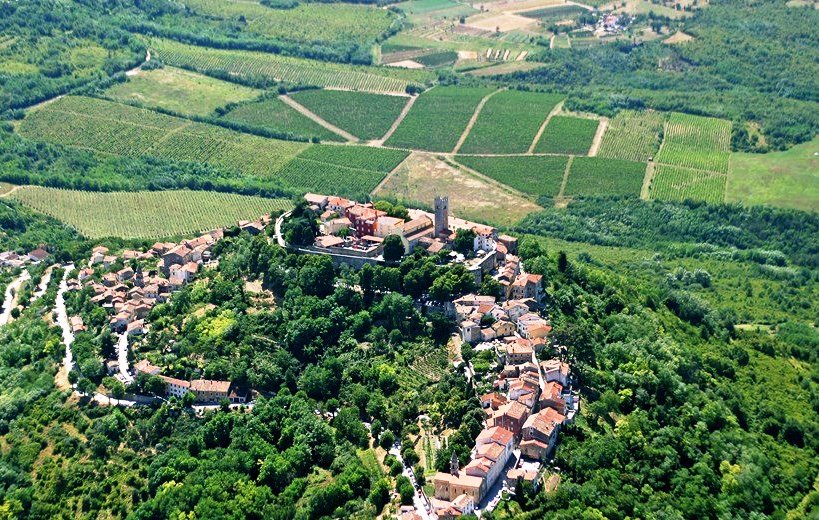
Croatia is a fabulous country blending spectacular coastline, mountains, lakes and islands as well as Roman, Venetian and Austrian history. Oh yeah, it’s also a southern Slavic country that was part of the former Yugoslavia and they produce outstanding wines!
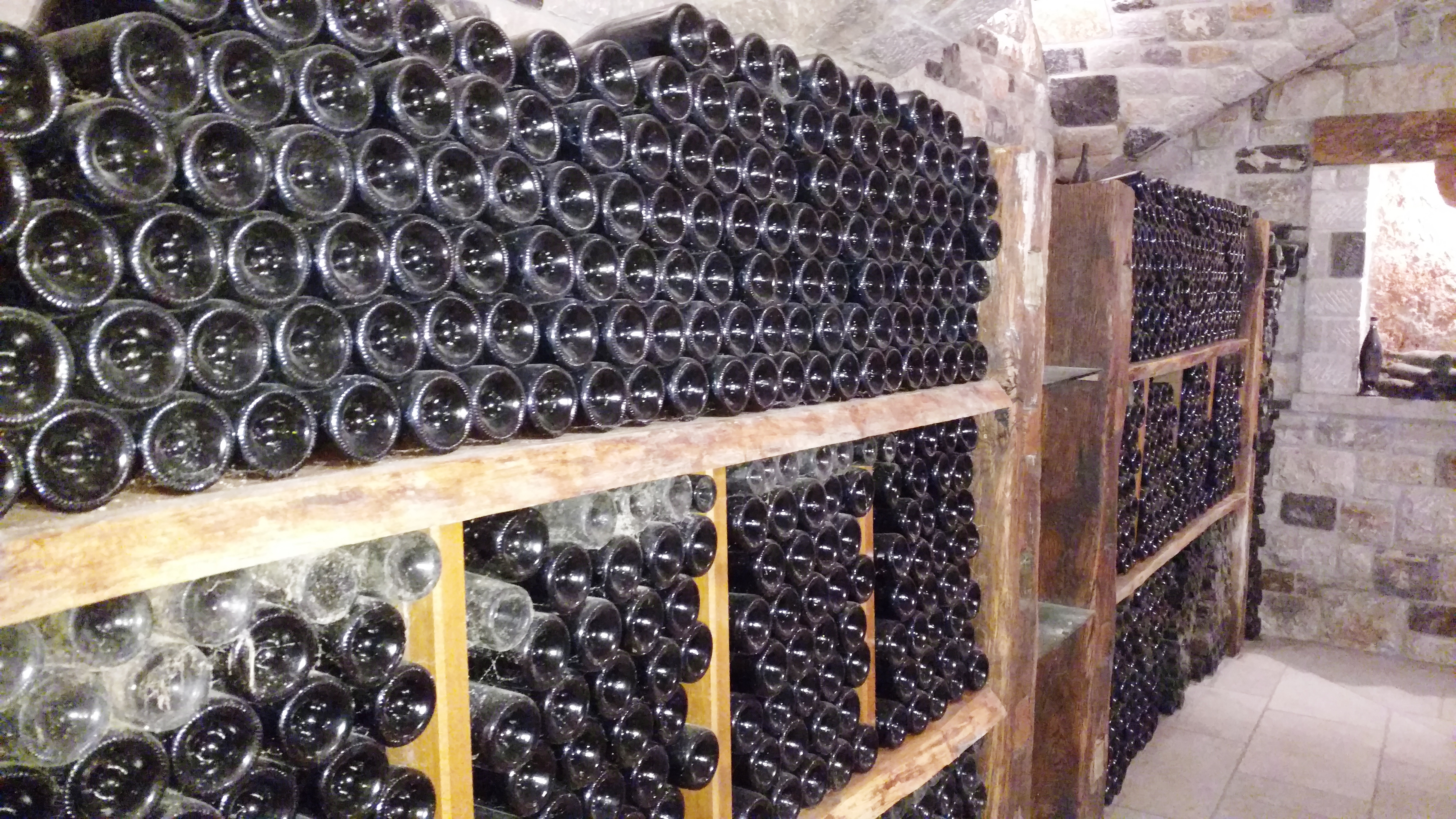 The wine cellar of Boris Lisjak a multi-generational producer in Dutovlje (L.Compisi)
The wine cellar of Boris Lisjak a multi-generational producer in Dutovlje (L.Compisi)
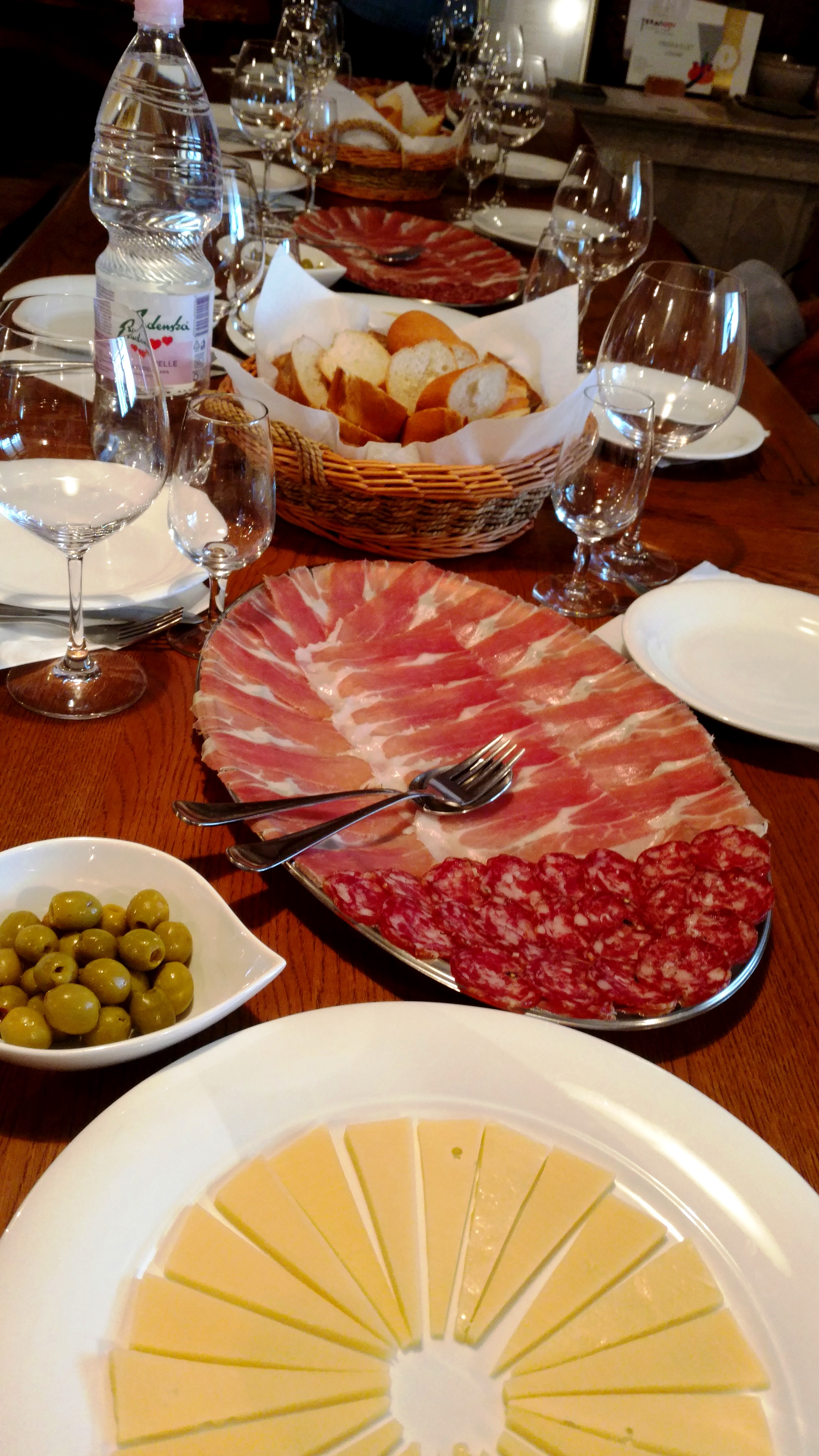 We enjoyed this delicious traditional Istrian lunch at Lisjak Winery (L.Compisi)
We enjoyed this delicious traditional Istrian lunch at Lisjak Winery (L.Compisi)
We began our visit to the Istrian Peninsula after departing the Ljubljana and the Julian Alps of Slovenia. I do not believe we were prepared for the variety of terrain and the changing topography that we observed as we moved closer to the Adriatic. Although the landscape remained hilly the mountains of the Alps disappeared in our rear view mirror.
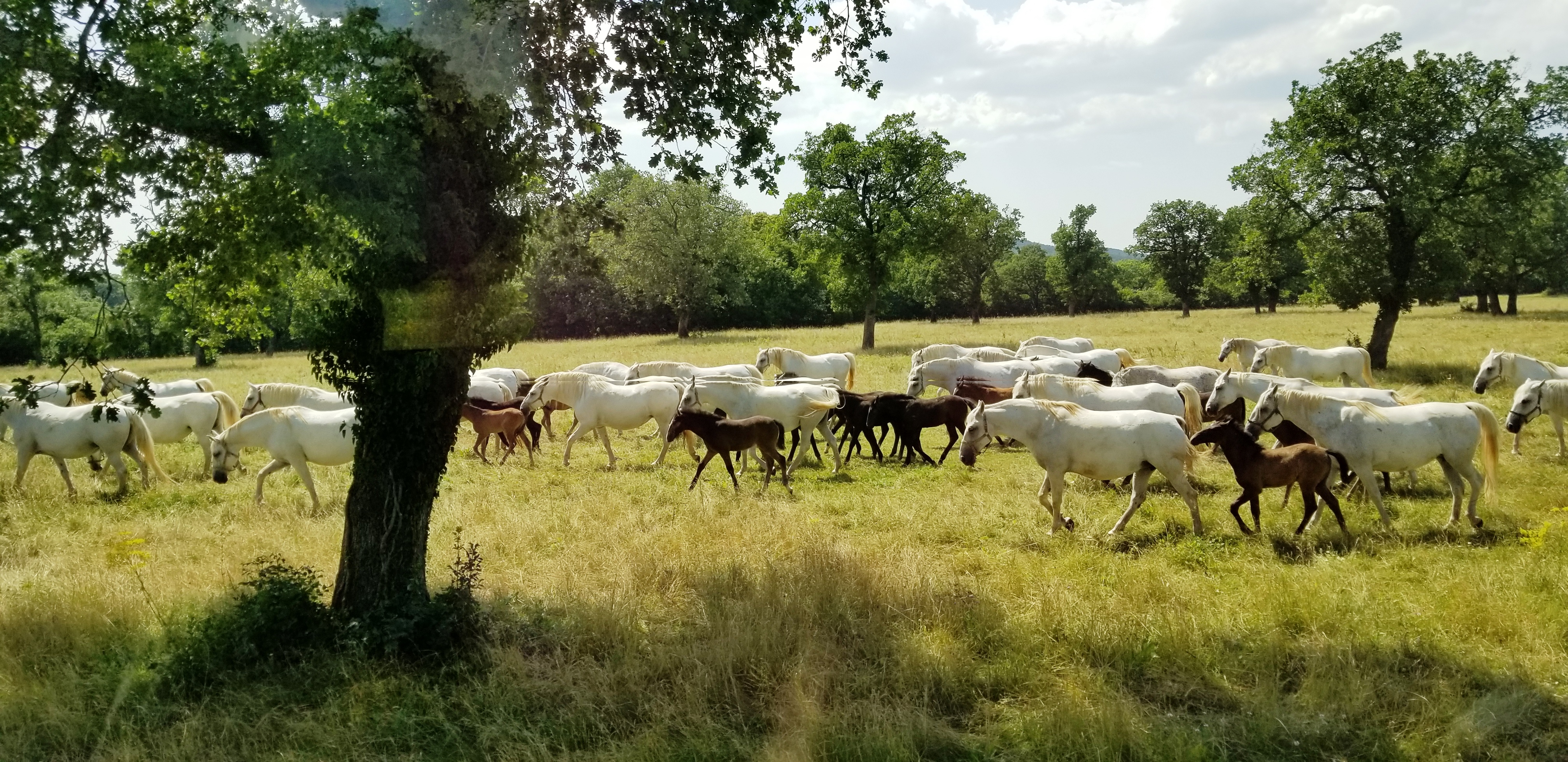 We drove by the Lipica stud farm where they breed Lipizzaner Stallions (L.Compisi)
We drove by the Lipica stud farm where they breed Lipizzaner Stallions (L.Compisi)
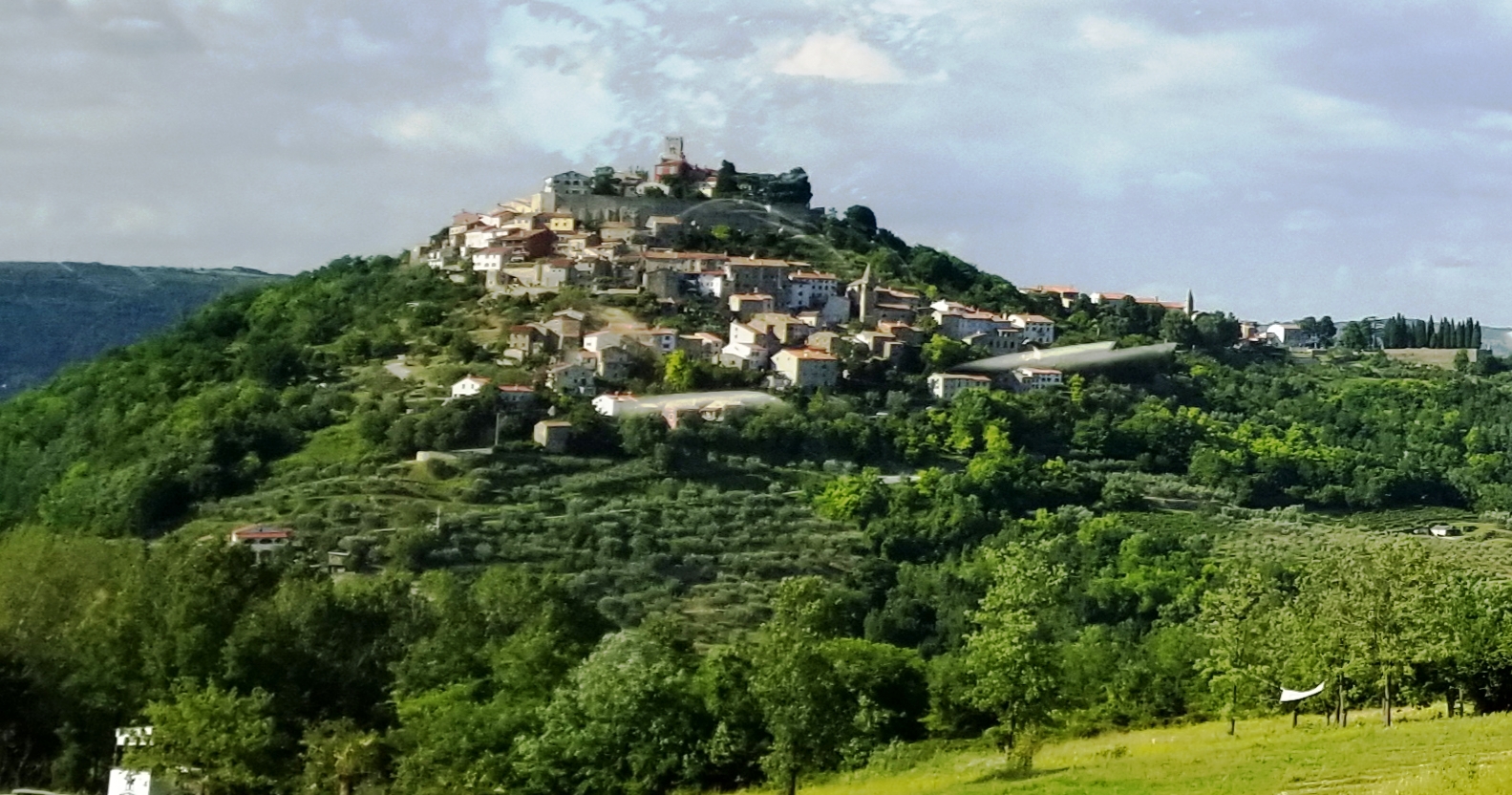 The hilltop city of Motovun in Istria. (L.Compisi)
The hilltop city of Motovun in Istria. (L.Compisi)
 An aerial view of Motovun (Courtesy of Hotel Kaštel Motovun)
An aerial view of Motovun (Courtesy of Hotel Kaštel Motovun)
We arrived at the hilltop city of Motovun in the early evening and had flash backs of pre-tourist Tuscany. Beautiful hillside vineyards and a walled city with a castle on top greeted us. Motovun only allows residents with small cars on their narrow streets so those arriving by bus had to carry/pull their luggage up the steep, upward sloping cobblestone streets for about half a mile. Upon arrival at Hotel Kaštel Motovun we realized it was the castle we saw from below although clearly modernized cover the centuries and expanded into neighboring buildings. The views from the top are quite spectacular and we enjoyed an informal al fresco dinner overlooking the lush valley below.
 We stayed at the Hotel Kaštel Motovun for 2 nights (L.Compisi)
We stayed at the Hotel Kaštel Motovun for 2 nights (L.Compisi)
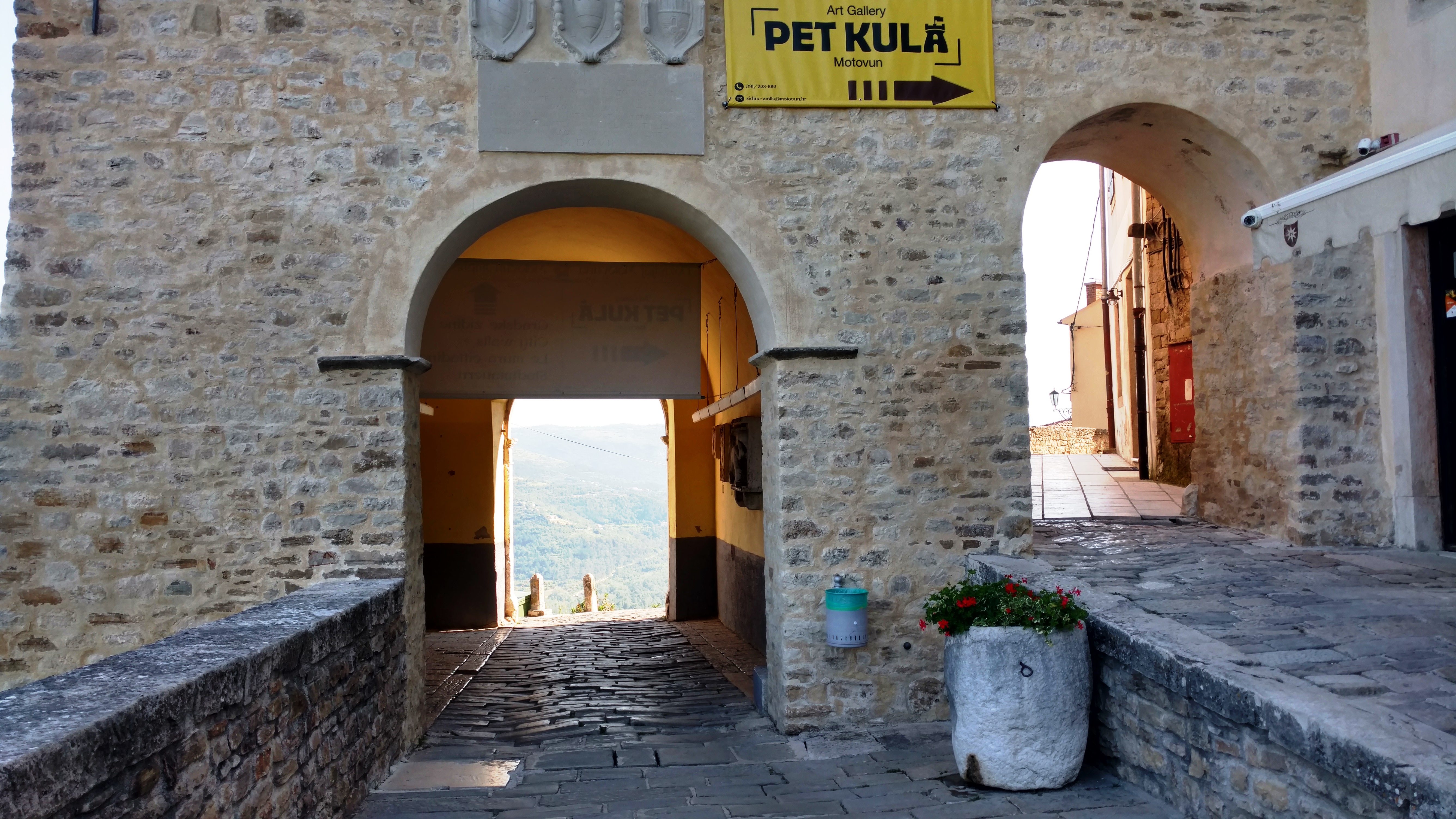 Some of the narrow cobblestone streets of Motovun (L.Copisi)
Some of the narrow cobblestone streets of Motovun (L.Copisi)
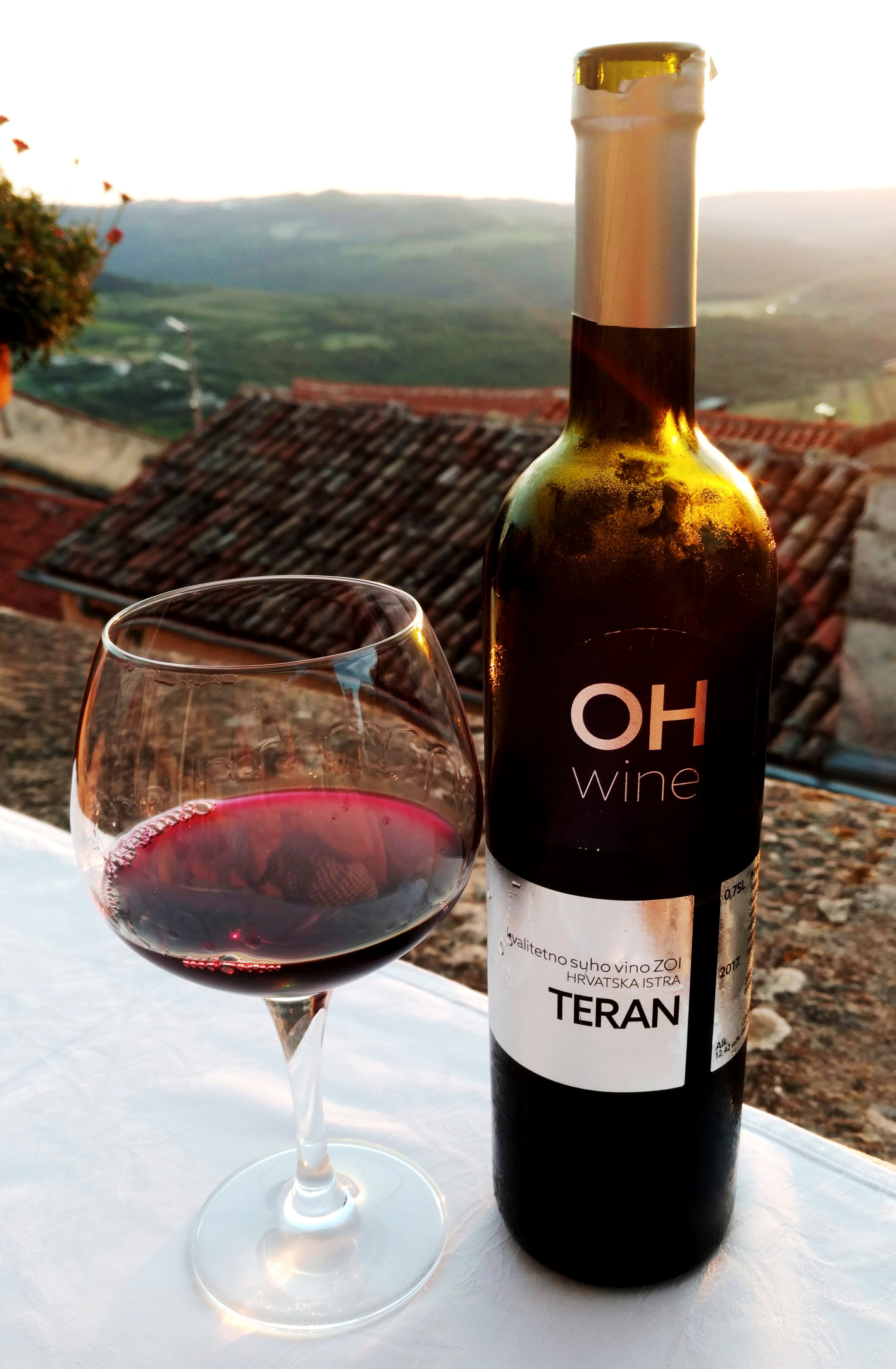 We enjoyed this bottle of Teran wine with dinner in Motovun (L.Compisi)
We enjoyed this bottle of Teran wine with dinner in Motovun (L.Compisi)
The next morning we motored to Pula, an ancient city with extensive Roman ruins and history. One of the six largest and best preserved Roman Amphitheaters outside the Colosseum in Rome is located in Pula. Called Pulska Arena in Croatian, it is the only Roman amphitheater to have 4 side towers entirely preserved. The Arena was constructed between 27 BC and 68 AD, with interior elliptical dimensions of 435 feet by 345 feet and walls that stand 106 feet high. It could accommodate 23,000 spectators who would come to watch the gladiators do battle as well as the Christians being martyred with wild animals. Other Roman ruins exist but you will also find Venetian architecture in this very walkable city. We took full advantage of a city tour by a local guide who offered exceptional historic perspective to Pula.
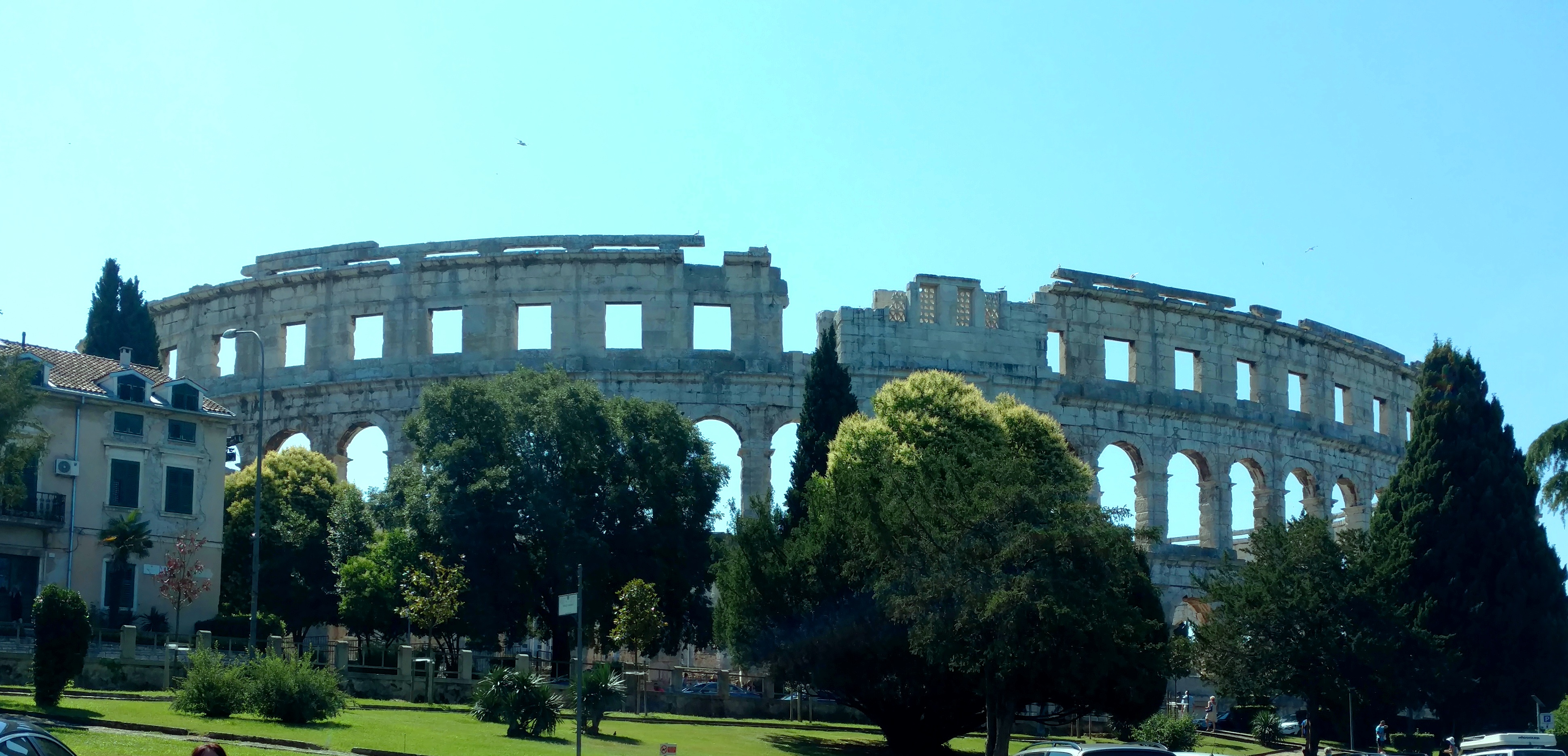 An exterior view of Pula Arena built between 27 BC and 68 AD (L.Compisi)
An exterior view of Pula Arena built between 27 BC and 68 AD (L.Compisi)
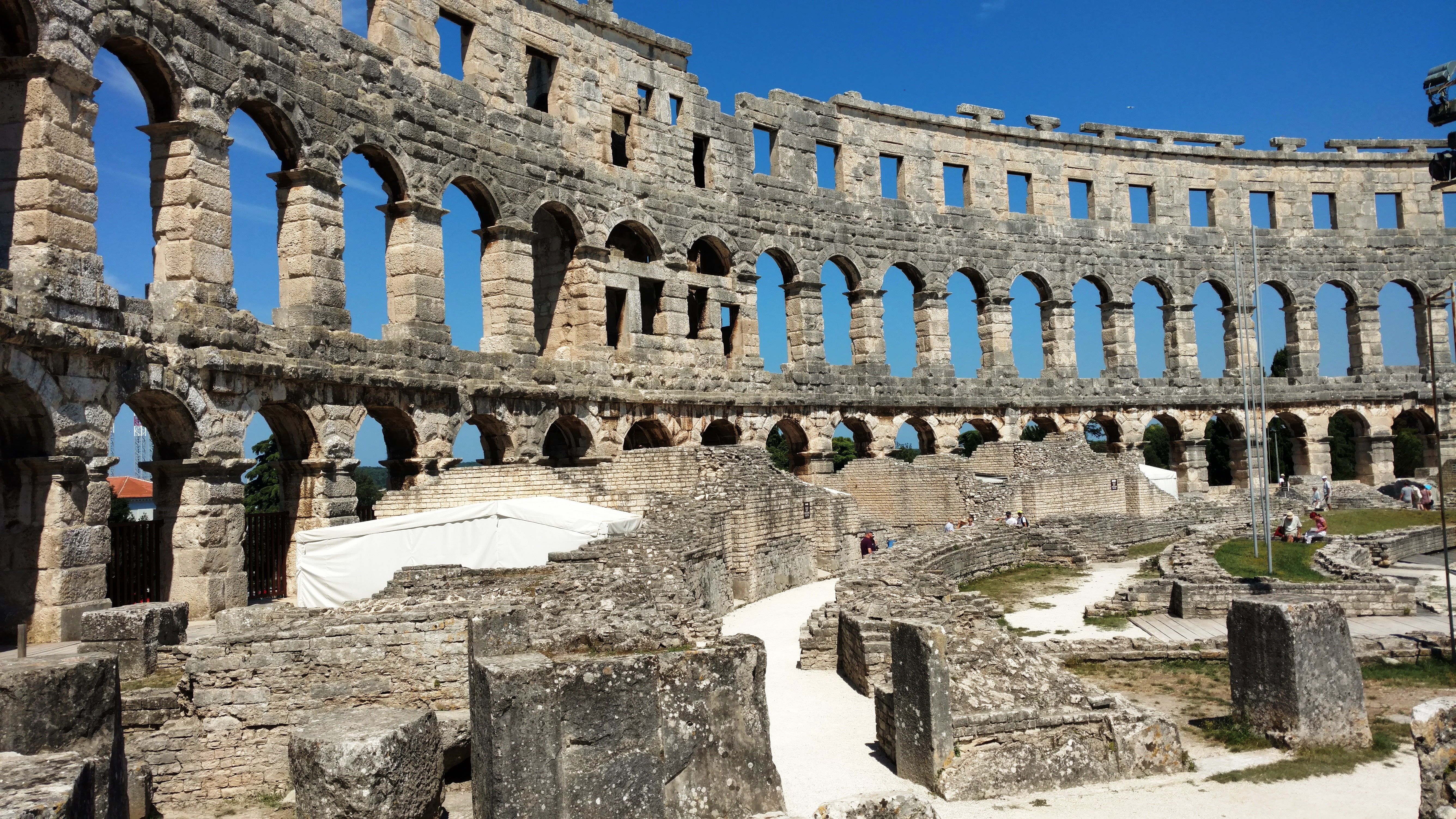 The interior of Pula Arena (L.Compisi)
The interior of Pula Arena (L.Compisi)
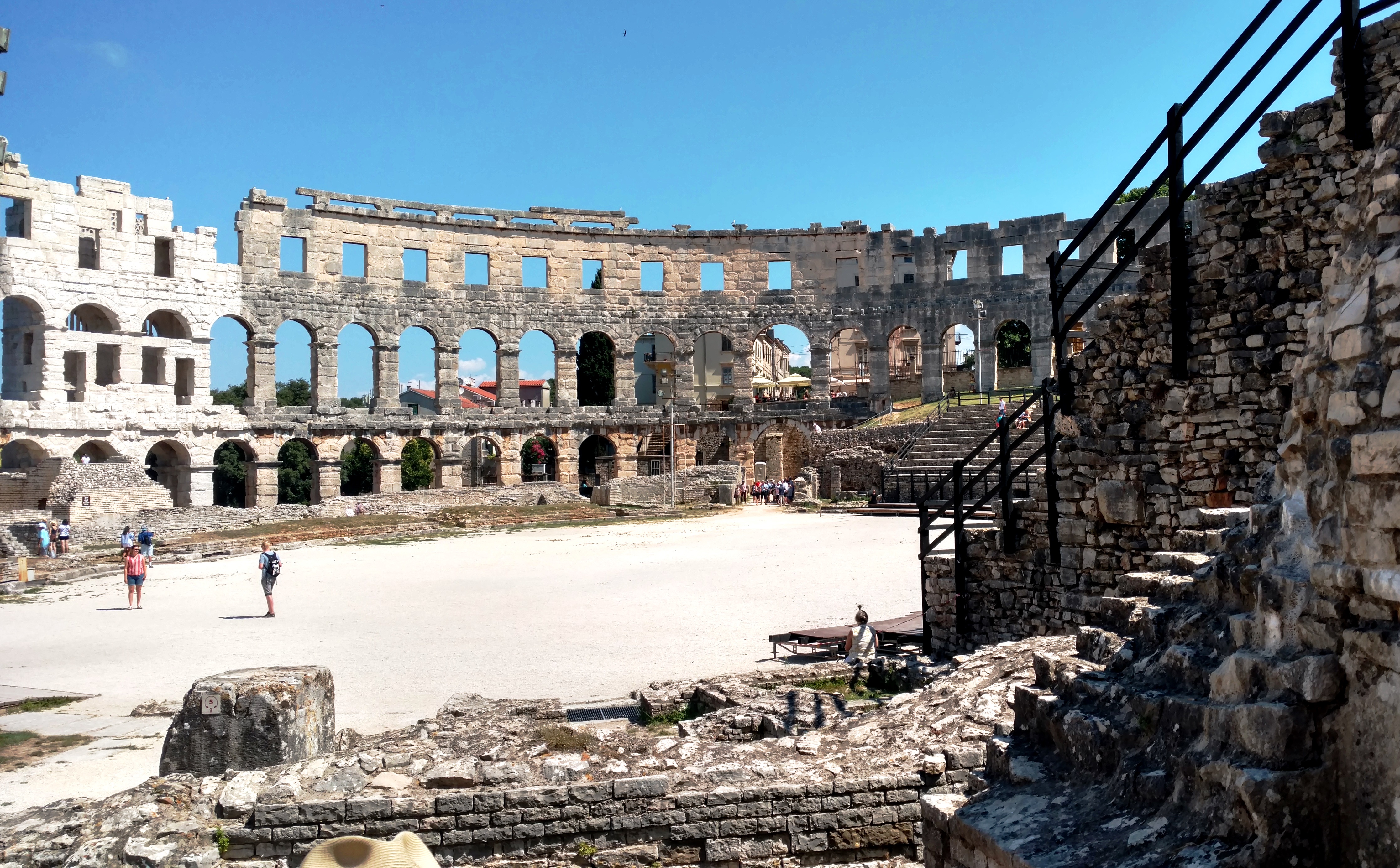 Amazingly well preserved arena where Christians were martyred (L.Compisi)
Amazingly well preserved arena where Christians were martyred (L.Compisi)
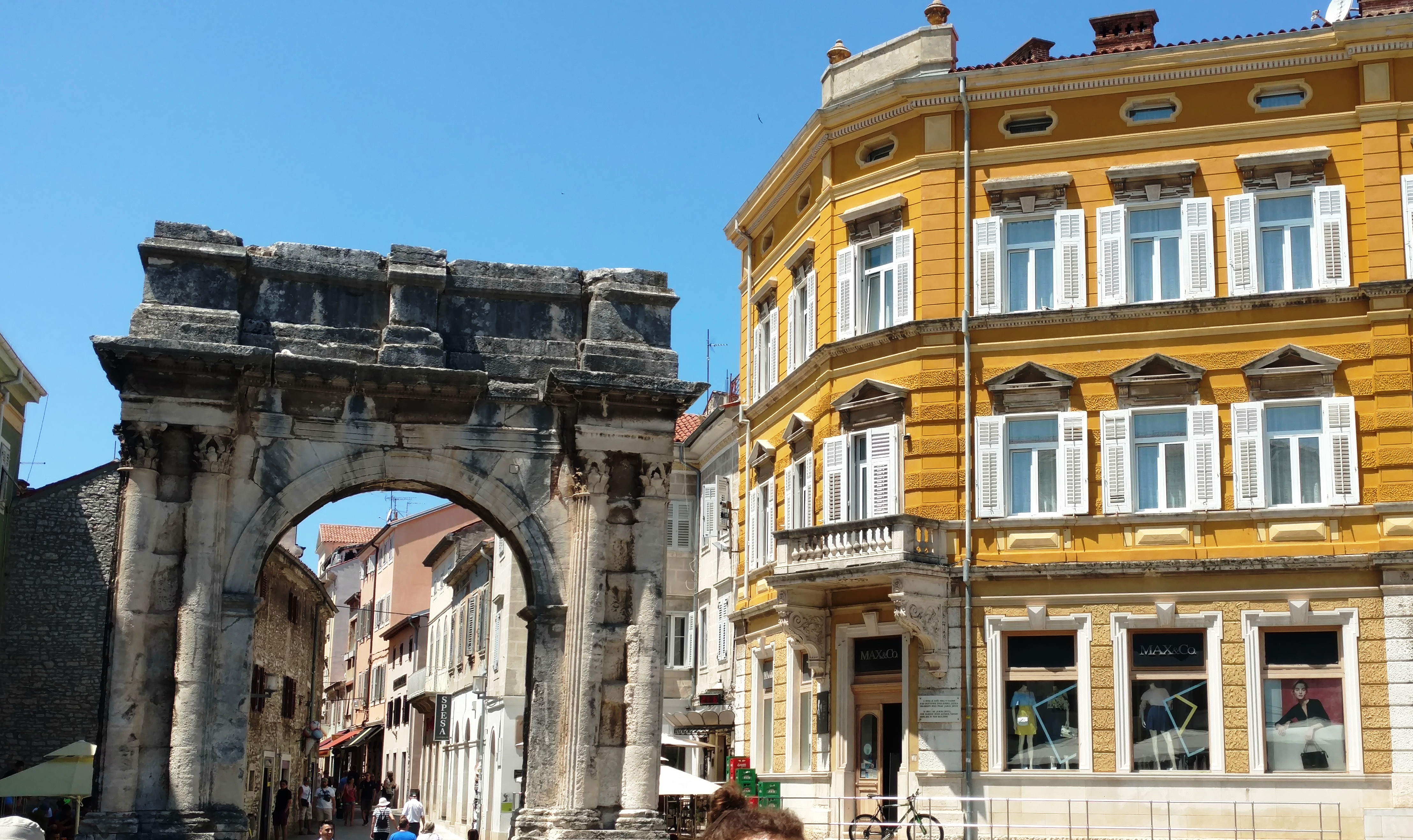 A Roman Arch in Pula and a more modern building side by side (L.Compisi)
A Roman Arch in Pula and a more modern building side by side (L.Compisi)
The following day we motored to the Venetian-era seaside town of Rovinj. The location is quite beautiful and situated along the Adriatic Sea. A favorite resort for eastern Europeans for many, many years, it has become extremely popular with western Europeans since Croatia became an independent nation outside the grip of former Yugoslav President Marshall Tito.
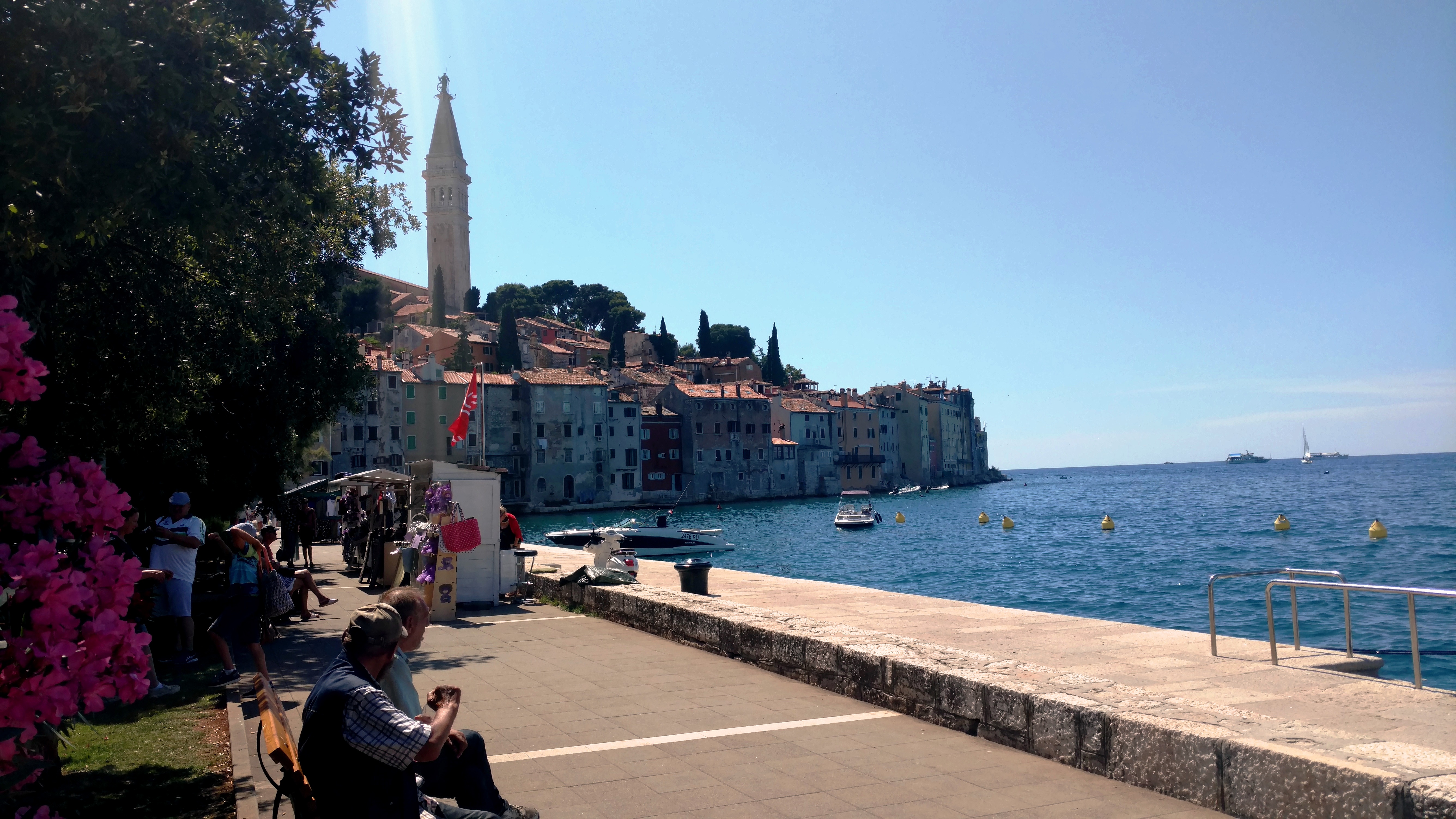 The seaside city of Rovinj in Istria (L.Compisi)
The seaside city of Rovinj in Istria (L.Compisi)
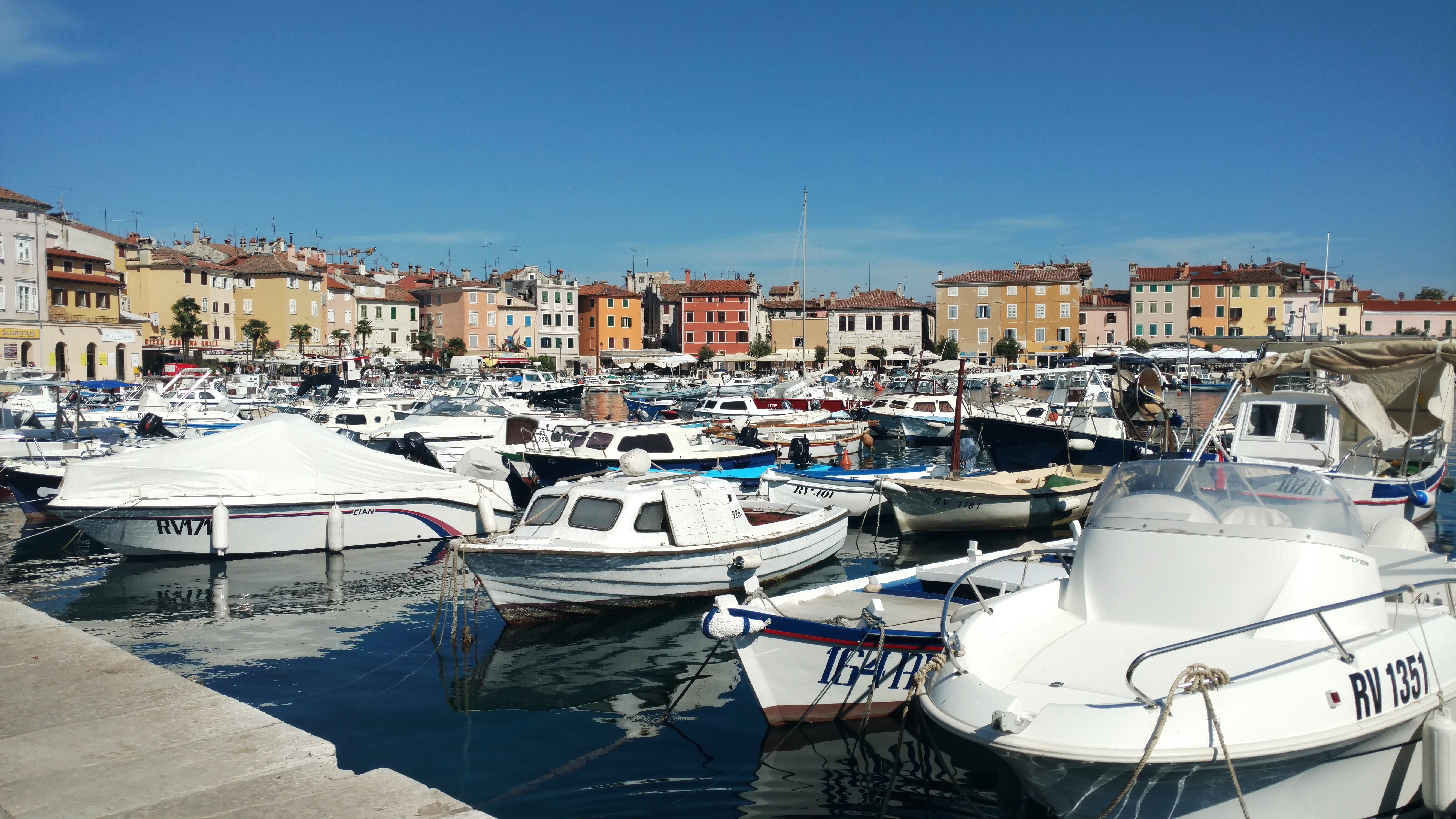 The very active fishing harbor of Rovinj (L.Compisi)
The very active fishing harbor of Rovinj (L.Compisi)
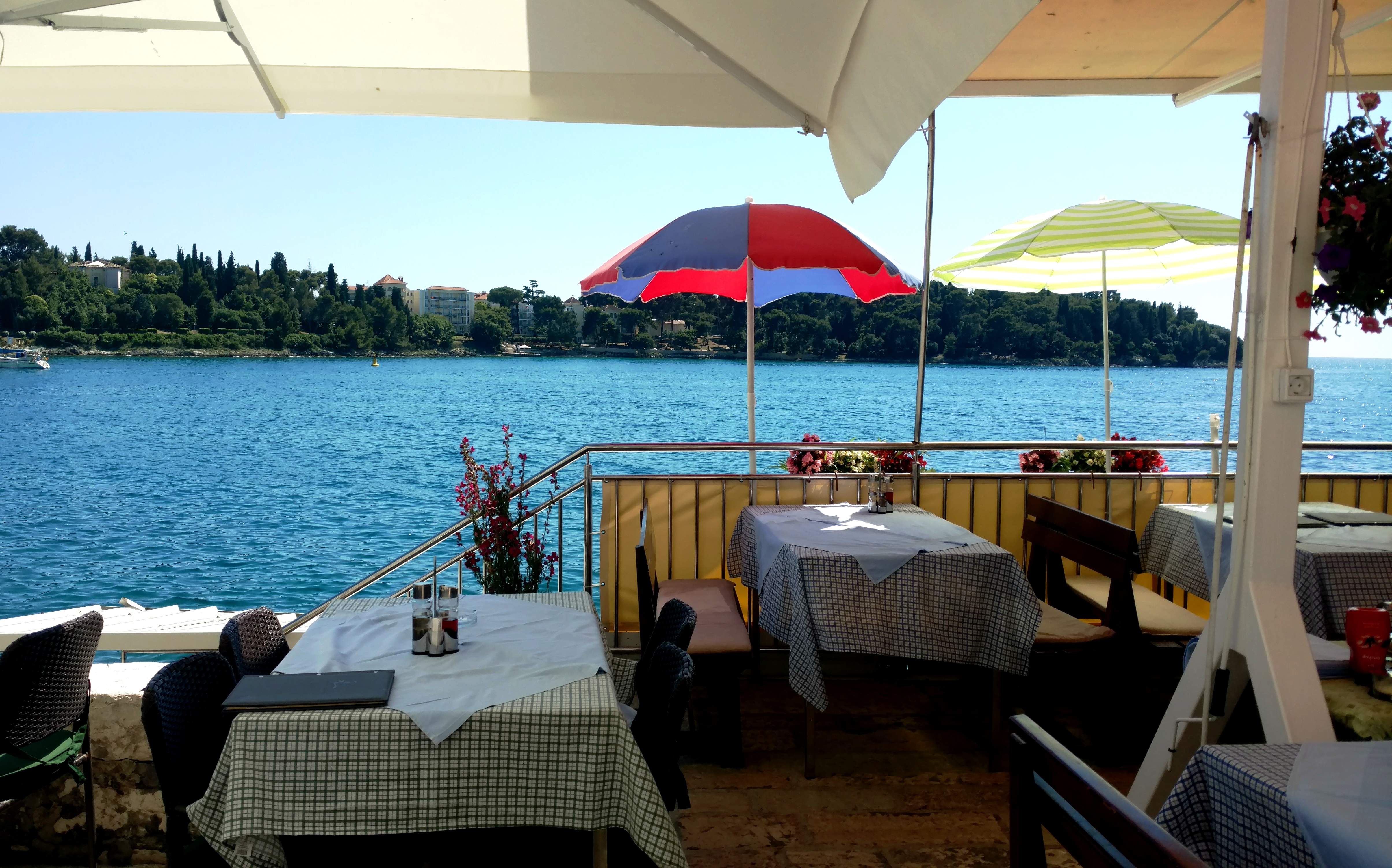 One of the many seaside restaurants in Rovinj (L.Compisi)
One of the many seaside restaurants in Rovinj (L.Compisi)
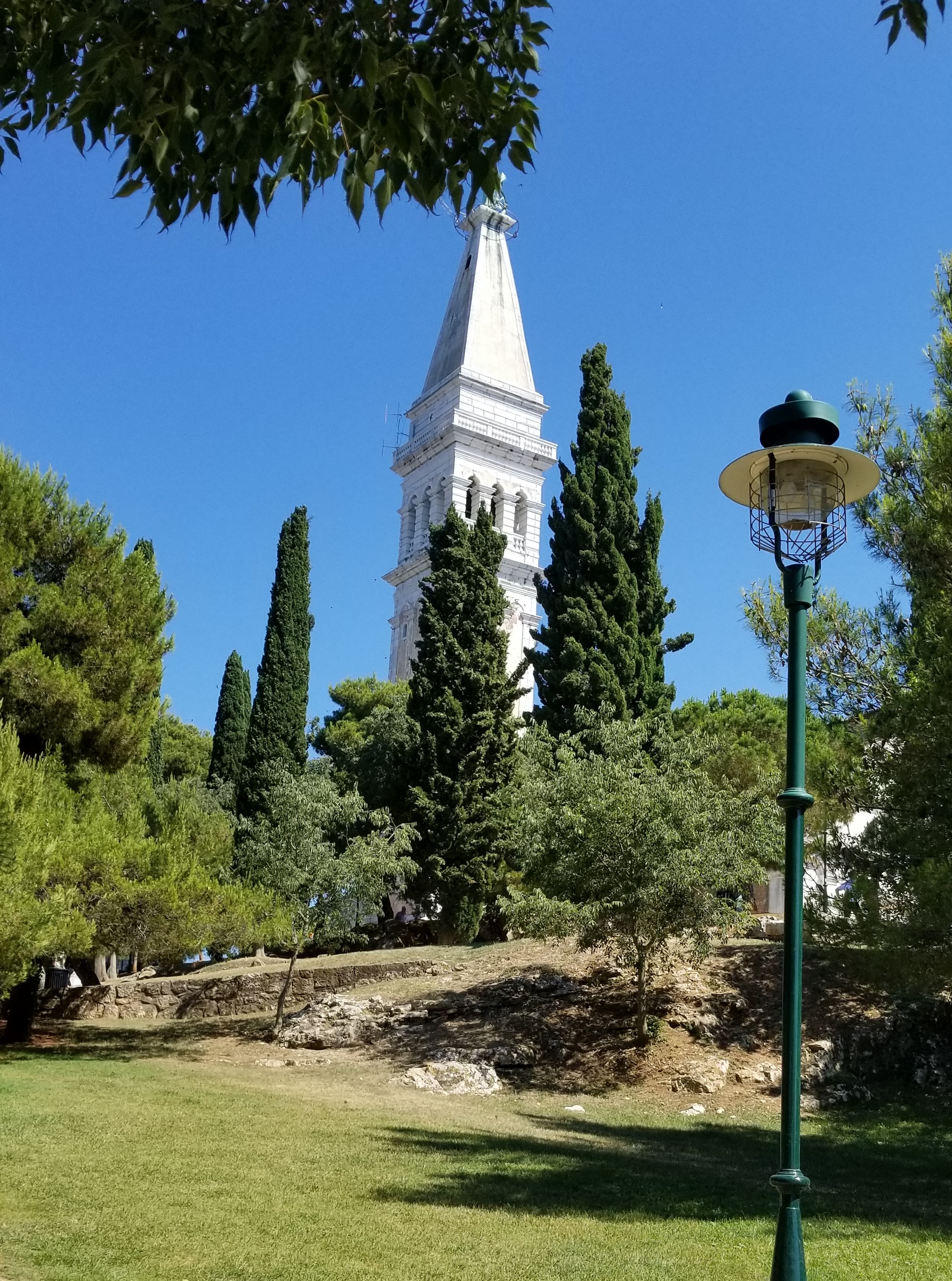 A beautiful church graces the highest point in Rovinj offering spectacular views (L.Compisi)
A beautiful church graces the highest point in Rovinj offering spectacular views (L.Compisi)
Aside from the mainland of Rovinj with its population of about 15,000, Rovinj has 19 islands of its coast. Of additional note, Rovinj is the in the top five tourist destination in the country partly because of the numerous pastel-colored homes ringing the beautiful and active fishing harbor. Getting to Rovinj by air requires flying into Pula or Trieste, the closest airports. Also, during the busy summer season there are high speed ferries from Venice as well as Ravenna and Cosenatico, all in Italy.
Please keep a digital eye for the next installments of this adventure through the former Yugoslavia including Slovenia, Bosnia-Herzogovina and Croatia.